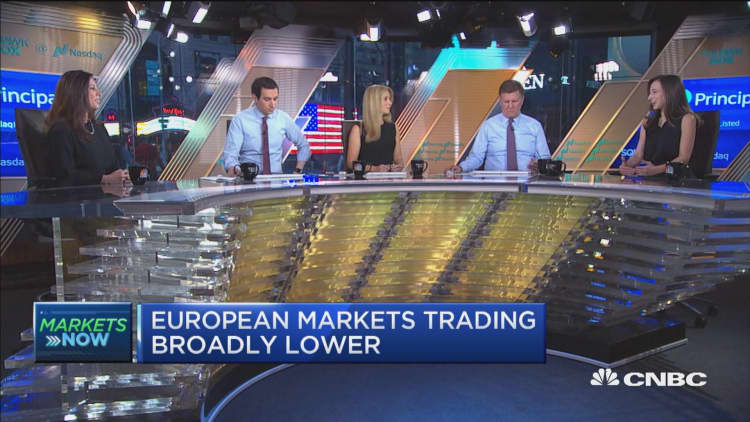
Friday's nonfarm payrolls report for September comes at an important time for markets: As inflation fears again pop up, the government's measures of not only job creation but also wage growth could provide important signposts for what's ahead.
Economists surveyed by Refinitiv figure that payrolls grew by 185,000 for the month and the unemployment rate ticked down one-tenth of a percentage point to 3.8 percent. The job gain would be a little below the average increase of 207,000 so far in 2018, but likely enough to convince Wall Street that the employment climate remains strong.
What the market will be watching more closely, though, will be the increase in average hourly earnings.
August showed a 2.9 percent gain, the biggest year-over-year rise since the recovery began in 2009. If the September number eclipses that, it could add to a belief that inflation is brewing and helping to stoke higher wage pressures. Current expectations for a 0.3 percent month gain would equate into 2.8 percent year-over-year growth.
"What the market is looking for is any indication of a radical acceleration in wages vs. steady growth," said Bryan Besecker, market strategist at BNY Mellon. "If there's a steady improvement, I think the market will be able to withstand that. If for any reason we're entering a new regime ... that will change the dynamic of the story."
The market got a preview back in February of what happens when wages jump unexpectedly. A report that showed a 2.9 percent wage increase — revised lower subsequently — triggered a minor panic about inflation that led to a stock market correction.
This week's report comes amid a sell-off Thursday after the 10-year Treasury yield hit its highest level in seven years. That came a day after strong economic data hinted that the jobs report may top expectations and a statement from Fed Chairman Jerome Powell indicating that the central bank has a number of rate hikes ahead before it reaches the desired "neutral" level.
Wall Street misinterpreted last week's post-meeting Federal Open Market Committee statement as indicating the central bank might be closer to the end of the current tightening cycle.
Besecker thinks the market is in the midst of a transition away from financial crisis-era conditions on multiple levels. Indeed, Powell said the cheap-money policies the Fed put in place during that time are no longer necessary.
"We're in uncharted waters, and [the market's] not sure how the Fed will respond in that environment," Besecker said.
The impact of Florence
There's one wildcard in the works for this week's report: Hurricane Florence, which thrashed the Carolinas and could be a principal factor should the payroll count miss expectations. Barclays economist Michael Gapen said Florence's effects "are a touch less negative" than expected, but still will be felt.
One forecaster, though, thinks that Florence not only will affect the number, but will do so dramatically.
Beth Ann Bovino, chief U.S. economist at S&P Global Ratings, expects payroll growth of just 125,000, which would be the worst number going back to September 2017.
However, Bovino thinks the pain will be short-lived and the jobs market eventually will return to trend growth.
"Despite the possible weather-related distortions, there's continued strength in sentiment readings for both businesses and households as initial jobless claims hover around a 49-year low, leaving the jobs market picture upbeat," she said in a note.
Interestingly, Bovino said the storm actually might have an upward impact on the hourly earnings number because workers on the lower end of the wage scale didn't get paid during the storm.
"This will skew the survey results by accounting for more relatively higher-paid, likely salaried, workers, artificially boosting the monthly number," she wrote. "These distortions will likely reverse the following month, just as was the case after last year's hurricane-related distortions."
Florence will push the weekly hours-worked number down a touch to 34.4, she added.
However, neither Bovino nor Besecker thinks the report will impact the Fed, which is expected to approve one more rate increase before the end of the year and three more in 2019.
WATCH: LinkedIn expert says hiring ticked lower.



